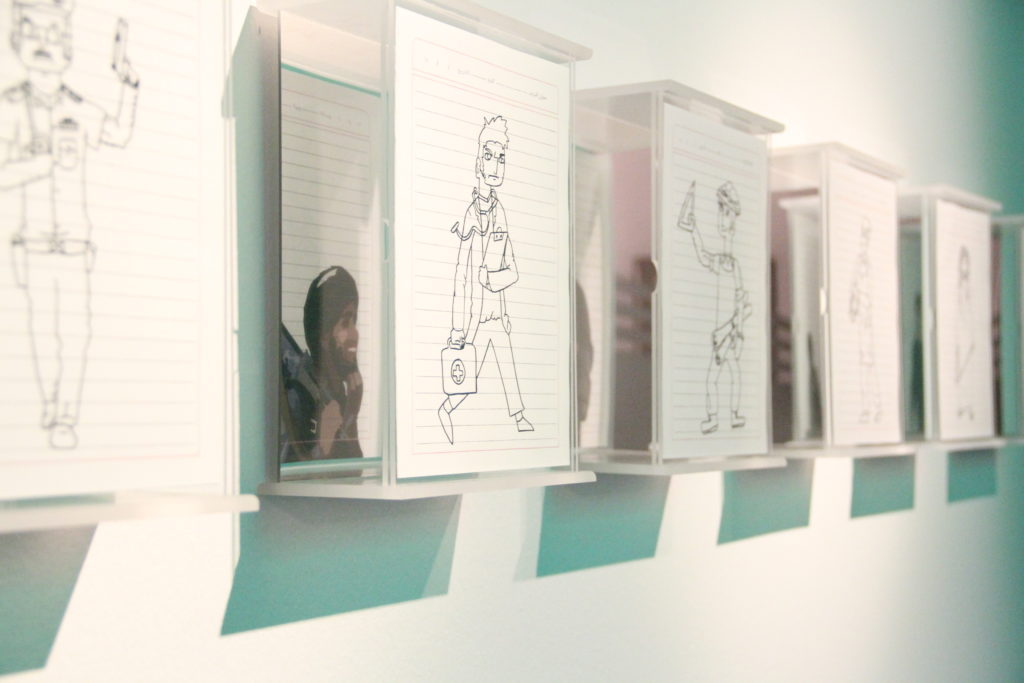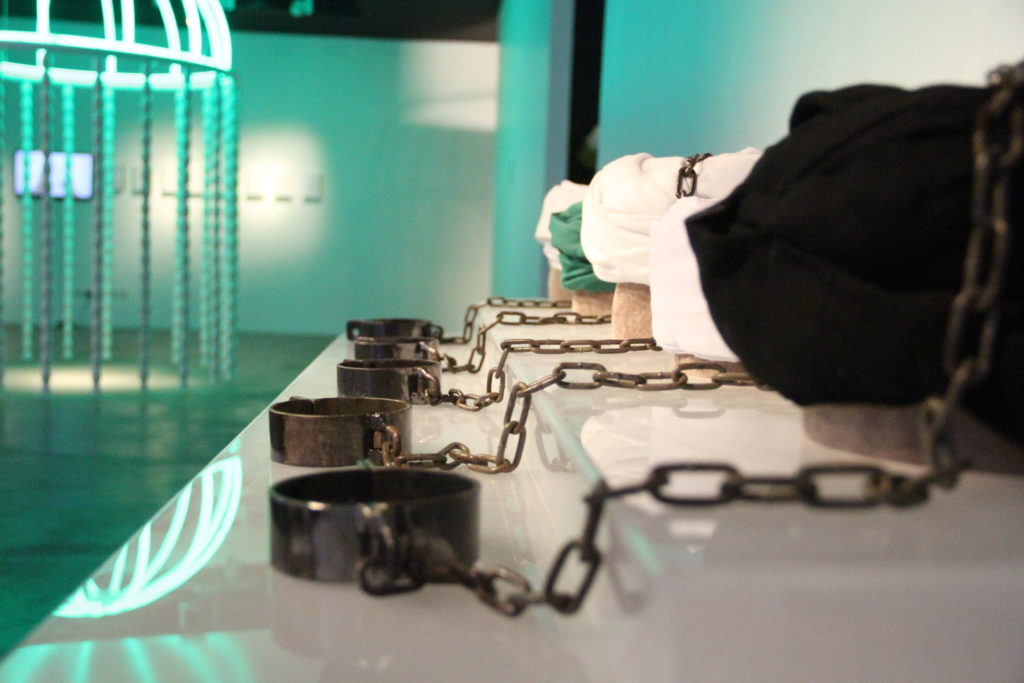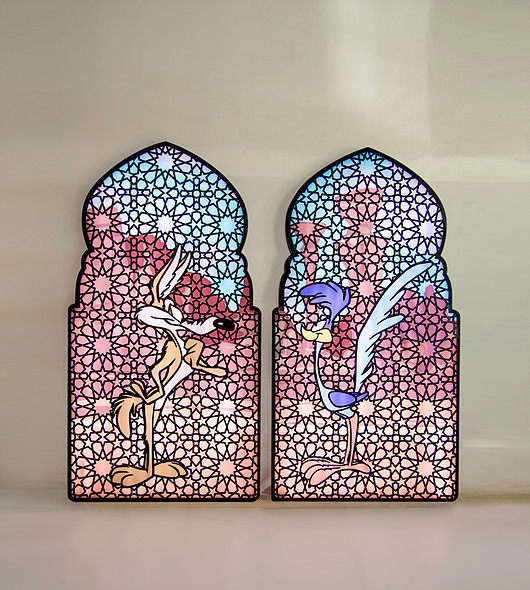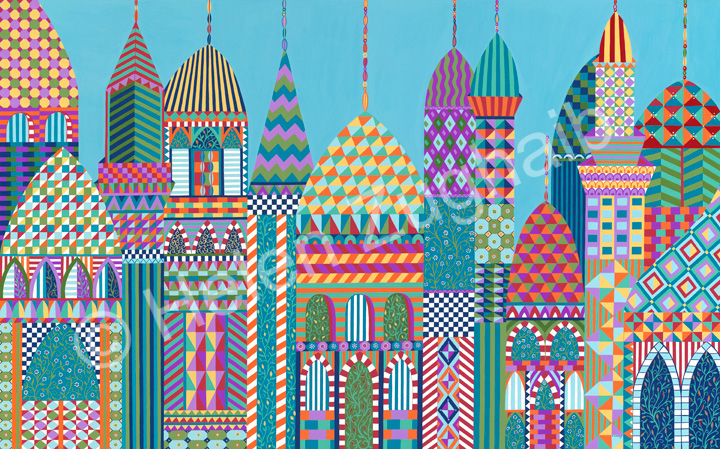
By Helen Zughaib
Our life is a series of endless stories, which overlap and intersect one way or another, this intersection is what brings us closer to others. We share a human experience with someone when we find that this experience permeates deep down inside us and directs our memories to something we’ve come across before .Documenting our experiences perhaps helps another person to move forward in life and therein we sense the power of stories, which have been a lifeboat for me.
I sincerely believe that behind everything we do there is a story that somehow directs us along the way no matter what is this thing we are doing: painting, a sculpture, an article, the way we choose what to wear in the morning, or the color we choose. I can see stories in numbers and financial reports. The important thing is learning how to tell your story.
I often find myself analyzing paintings and when I’m wandering in the Virtual world, or during my visits to galleries, I dig deep into my thoughts trying to figure out what was the artist trying to tell this girl before it freezes in the panel ? What secret did this painting tell the artist when it was luring him to be drawn? Where would this person in the painting go if he\she found themselves alive in this world? Imagine how would the scene be if the painting became a short video clip? Is it a result of happiness or sadness? Or is the artist through this painting trying to figure out his feelings? What was he thinking when these details were added? It is a language in itself. Many questions apply to all paintings because I care about the hidden messages more.
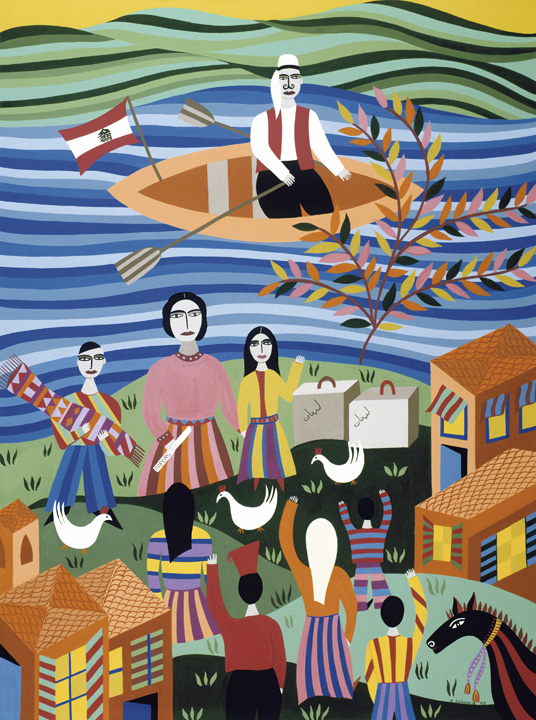
Saying Goodbye By Helen Zughaib
And when the artist gives me what I’m looking for on a golden platter , inevitably it will be a unique experience. Helen Zughaib with her calm and charming voice enveloping nostalgia, helped me to build bridges to her paintings, by not letting me think and analyze. She was telling the stories behind her paintings at the workshop “Art in Diplomacy and finding your own story” she took us through a journey to view her work. I would say that it felt like a trip on a flying carpet, which took us across time, moving between past and present, going to America, Beirut, Palestine and Damascus, sometimes we stood by the river and we bid farewell to those who are leaving and other times we stood humbly before a mosque with Almanarah (minaret) rising from behind.
What really helped build those bridges is the Arabian touch that we sense from her artwork, you can tell that her identity as an Arab-American can appear through a unique style , I felt that what the storyteller was referring to was there in her stories and I’ve always been fond of this since I was a kid. It’s like the stories our grandparents used to tell us on Friday when we gathered for a dinner.
The details merge in her paintings as if it was a piece coming out of wonderland. Simple and deep. The cherry on the top of the cake is her passion for her work, her family stories that she got to document in her artwork.
Nostalgia appears in the higher stages when Helen talked about returning to Lebanon. She was talking and when our eyes crossed many times, I sensed the spectrum of grief. She tried to encapsulate this feeling with a smile and some jokes from time to time.
I have to refer to the artwork which was modeled on tiles from Damascus. They were beautiful tiles with the details that Damascus is famous for and some of them were broken. It is her way to say that war destroyed everything. I felt tears flowing from my eyes for this simple and profound work had made me feel emotional in a way I cannot describe.
I should not forget to thank the Saudi Art Council for organizing a group of art events such as these. It is wonderful that they tried to connect local art and world experiences.
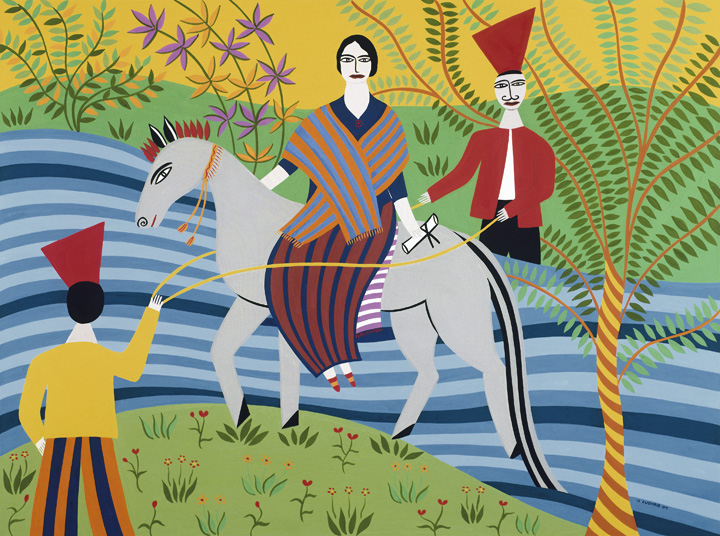
Crossing Thelitani By Helen Zughaib
الحياة عبارة عن سلسلة من القصص اللانهائية، التي تتداخل وتتقاطع بشكل أو بآخر وهذا التقاطع هو ما يقربنا من البعض حينما نجد فيما يرويه فكرة خطرت لنا وحاصرتنا يوما ما، حينما يلمس شعورا تغلغل في أعماقنا ذات تجربة، ومن هنا نشترك في تجربة إنسانية مع شخص دون آخر، إذا ما حاولنا يوماً ما توثيقها، ربما تلامس شخصاً آخر وتعينه على المضيّ قدما في حياته، وهنا تكمن قوّة القصص، التي طالما كانت قارب نجاة بالنسبة لي، وخلف كل عمل نقدمه لوحة أو تمثال مشهد تمثيلي أو مقال نكتبها، خلف كل عمل نقوم به من إختيار مانرتديه بالصباح حتى طريقة رؤىتنا للعالم، حتى التقارير المالية، والأرقام، كلها مبتدئها قصة طالما نعرف مانريد قوله وكيف، ستصل حتما بالطريقة التي نرغبها.
غالبا ما أجد نفسي أحلل اللوحات التي أصادفها في تجوالي الافتراضي، أو خلال رحلاتي للمعارض الفنّية، ماذا كانت تقول هذه الفتاة قبل أن تتجمد في لوحة؟، بماذا أسرّت لرسامها حينما كانت ترواده لرسمها؟، وإلى أين ستذهب لو قدر لها أن تخرج لهذا العالم؟ ماذا لو أصبحت هذه اللوحة بشكل مفاجئ مقطع فيديو قصير؟ كيف رسمها الفنان؟ عن أي ألم كان يعبر؟ وهل يمكن أن نرهن لحظة سعيدة في لوحة؟ بماذا كان يفكر حينما أضاف هذه التفاصيل؟، هي لغة بحد ذاتها وحديث من نوع آخر، تساؤلات كثيرة تنطبق على كل اللوحات التي أصادفها، بكل التفاصيل التي يحويها الإيطار. لأنني أهتم بالماوراء أكثر من كل شيء ظاهر.

